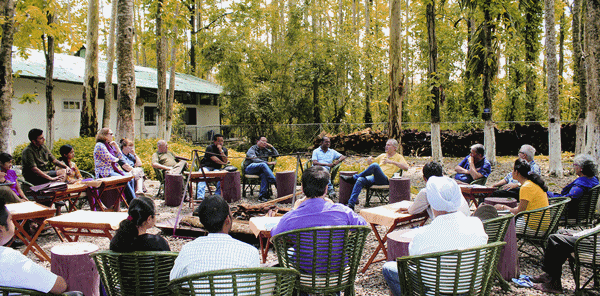There is a need to sensitise travel agents towards the sensitivity of nature
Ranjit Barthakur, founder trustee of Balipara Foundation in Assam highlights the focus on community conservation in the Eastern Himalayas and the engagement with the travel industry to attract discerning visitors to the region
What is the vision/ mission of Balipara Foundation in terms of eco – tourism in the Eastern Himalayas?

The Eastern Himalayan region is home to some of Asia’s major rivers and three of the world’s 34 biodiversity hotspots which are of vital importance to the communities residing not only in the Eastern Himalayan region but many others across the world. Since the inception of Balipara Foundation, our vision has been to preserve and conserve the natural and cultural heritage of the region and develop symbiotic models for community conservation through technology to facilitate business and tourism based on the concept of Naturenomics – creating interdependence between nature and economics. Through our projects and initiatives, we are revitalising local communities through botany and promoting village, botany, community and agriculture tourism in the Eastern Himalayas. We
envision converting each village into “nature assets.”
What kind of engagement do you have with mainstream travel trade and tourism industry stakeholders?
Thus far, we have had over 10,000 people from 40 countries visiting us, visitors from 40 companies and 20 travel agents, who we are linked to. There is however, a need to sensitise travel agents towards the sensitivity of nature. The Eastern Himalayas is a kingdom of wilderness and has the best national parks and wildlife sanctuaries. At Balipara Foundation, we promote the Asian Safari – visit to Manas National Park, Pakke Tiger Reserve, Nameri National Park, Kaziranga National Park and other wildlife sanctuaries, where there is plenty of adventure tourism to experience and nature to fall in love with. Another aspect that requires development is connectivity linkages in the region. There is ample “rural tourism” opportunity in the region and to encourage realising its full potential, we are actively involved in facilitating connecting stakeholders to help achieve seamless connectivity through river transportation, road and railways, airline penetration and many new airports.
Which have been your key initiatives related to tourism (including conservation efforts)?
Our biggest global tourism brands this year are the Eastern Himalayan Botanic Ark and Elephant Country. Through the Botanic Ark, we have been able to convert 22 acres of barren land into a biodiverse haven of the Eastern Himalayas with 100,000 + plants, 52+ butterfly species, 40 + bird species, and 13+ snake species. The Ark has been nurtured and restored by the nine communities that live around it. Visitors can “connect” with nature through interactive botanic trails where they experience the thriving and threatened biodiversity of the region. Our Naturenomics School at the Ark offers nature based learning. Wild Mahseer, residences at the Ark, with an exclusive Heritage Bungalow and four tea bungalows, offers the lifestyle of a British era tea planter to visitors.
Elephant Country is our global brand for synergising community conservation and Asian elephant conservation efforts. This year, we have plans to explore collaborations with existing partners in Thailand, Myanmar, Laos and Cambodia to connect important elephant corridors through the Eastern Himalayas and Asia and through the Asian Elephant Secretariat, we aim to leverage technology to build a borderless world for elephants.
Any important projects in terms of community based tourism? How are you engaging/ training the local populace?
The Eastern Himalayan Botanic Ark is a community–led social enterprise surrounded by nine communities of the Eastern Himalayas – Mishing, Bodo, Adivasi, Rajbanshi, Assamese, Nepali, Bengali, Garo and Nyishi, who have nurtured and brought it to life. Wild Mahseer, residences within the Ark is Balipara Foundation’s living model of a Naturenomics business model. Nestled in the Eastern Himalayas it is a unique model for botany tourism through the empowerment of local communities. The staff running Wild Mahseer comes from the neighbouring communities and have been trained in hospitality management and food preparation. We offer tourism opportunities for meaningful interaction with these communities by visiting these villages through walking tours and cycle tours.
What is the focus of Naturenomics Forum 2017?
The Eastern Himalayan Naturenomics Forum has been a global platform for “people to people connect” with over 1400 participants and 10 participating countries such as China, USA, UK, UAE, Thailand, Bangladesh, Bhutan, India, Nepal and Myanmar. Our theme this year is ‘Community Conservation and Botany’.

